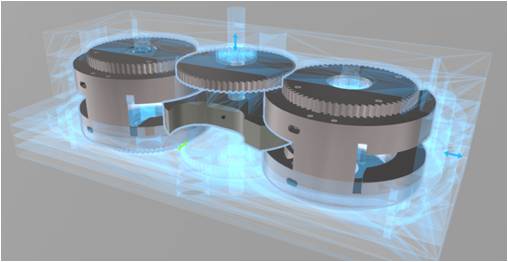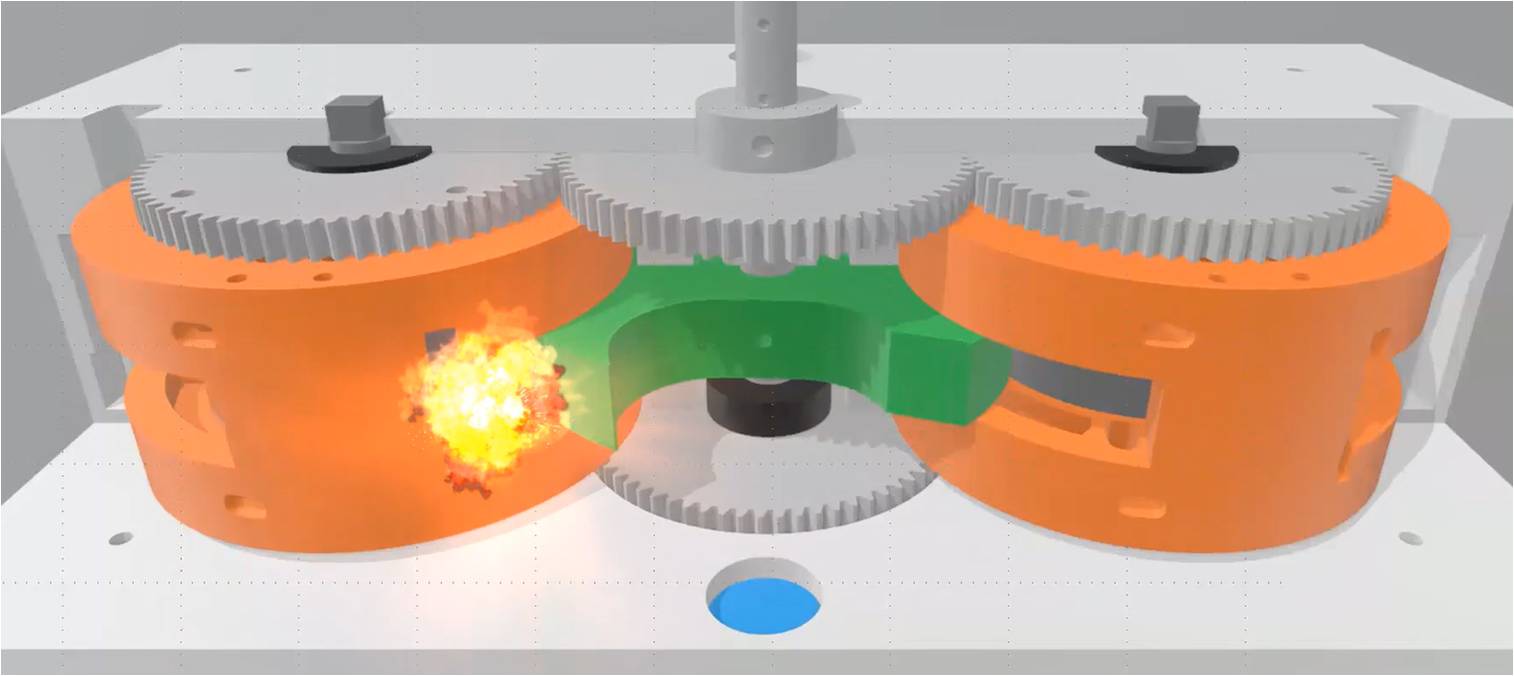



|

|

|

|

|

|

|
The continuous motion engine is being developed to improve energy efficiency and reduce pollution

Key benefits over existing technology is having no reciprocating parts, running oil free, a long expansion cycle with higher efficiency. It is ideal option for the future of using hydrogen for combustion as it does not have an pre-ignition or engine knock problem.
The technology is patented in the US, patent number US10094218B1.
A first prototype has been developed and test results are used to design a commercial viable version
.
Change the world of energy production to reduce global warming
Goal is to provide an engine with reduced fuel consumption, reduced exhaust pollutants and a reduced cost of manufacturing.
Current reciprocating piston engines have a very low energy efficiency.
The engine is ideally suited for hybrid usage, loading the battery while running at an optimal speed for efficiency and reduced emissions. It can support a faster transition to electric vehicles at a lower cost for consumers and for the environment
Production of large heavy batteries for electric vehicles creates an increase of CO2 on the short term. Using hybrids this can be avoided.
The design having no reciprocating parts, provides an energy efficiency improvement as compared with current piston engines.
Lubricant oil-free operation and a long burn cycle reduces pollution.
Lean operation and wide range of renewable fuels reduces environmental impact.

The new design is based on a continuous motion revolving piston, without loss of energy due reciprocating parts
Many improvements on the piston engine have been proposed of which the Wankel engine has been the only one to be actually used in production cars
The piston engine has energy losses from reciprocating parts and requires oil lubrication
The Wankel engine does not have reciprocating parts but burns even more oil and fuel
The new design disrupts the reciprocating engine model and provides new opportunities for improvements
Clean tech

New design enables energy reduction of more than 20%
Increased output to weight ratio and engine size provides new implementation opportunities
New materials and manufacturing overcomes a 100 year old stagnation in development
Reduced components and complexity reduces costs
A 'no knock' engine, allows a range of fuels including hydrogen
Self starting, self cooling and oil free operation reduces total costs further
Everywhere

From home bio-gas fueled electricity generator to massive ship engines
Stationary, sea, land and air applications
Scalable to any size
Ideally used as hybrid loading EV-car batteries, running on renewable fuels
R&D for continuous innovation

Continuous motion, aimed at continuous improvement
R&D to support implementation
Research partnerships to build and share results
Development support for early adopters
Designed to demand

Free licenses for R&D and prototype testing
Commercial licenses supporting first adopters
Licensing fees used to support R&D partners
Specific to application area, supporting clean tech applications
Investing
Real product and patent driven licensing income returns
Initial investment directly used in R&D
20 year patent payback horizon & clean tech benefits